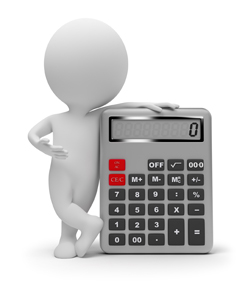Synopsis
Part 2 of this tutorial provides an overview of the cash accounting method and the accrual accounting method.
Of the two, the cash method is the easiest to administer and the easiest for most people to understand. But it does not provide a comprehensive picture of the company's financial condition. For instance, its balance sheet does not include accounts receivable and accounts payable.
The accrual does provide that picture, but its profit and loss statement can be misleading. Due to the way income and expenses are posted in an accrual system, there is no close correspondence (as a rule) between income and expenses on the profit and loss statement and actual cash inflows and outflows in the company.
Author: Mike Armour
Disclaimer
Even though this tutorial examines a variety of tax issues faced by small business owners, it should not be construed as legal, accounting, or tax advice. Always seek competent professional counsel in addressing issues and questions raised in this article.
Cash Accounting? Or Accrual Accounting?
Which Should You Use?
Part 2 of a Three-Part Tutorial
The Cash Accounting Method
Of the two accounting methods, cash accounting is easier for most people to understand, since it's basically the way that they manage their household finances. It is also simpler to administer. Cash accounting works somewhat like running a business from your own wallet. When you receive income, it goes into your wallet. When you pay expenses, money leaves your wallet. At any moment you know how much money you have by simply looking in the wallet.

Sounds easy enough. So what's the drawback? The drawback is with the financial statements generated by the cash method. These statements don't reflect how much money your customers owe you. Nor do they indicate how much you owe vendors for outstanding bills. Under cash accounting, accounts receivable and accounts payable do not appear on the balance sheet.
Why not? Because the balance sheet is a snapshot of current assets and liabilities. In cash accounting, assets and liabilities exist only if they were created as the result of money actually changing hands.
Thus, loans appear on the balance sheet (whether loans owed by you or loans owed to you), because with loans, money does change hands. By contrast, with accounts receivable and accounts payable, no exchange of money has yet occurred. They therefore do not appear on the cash method balance sheet.
What this all means is that financial reports using the cash accounting method tell you how much money you have on hand. But they do not tell you how much of that money you are free to spend or withdraw from the business.
The Accrual Accounting Method
The accrual method, on the other hand, gives you a balance sheet with a more complete picture of where you stand financially. At any given moment it spells out how much income you have earned but have not yet received. And it reflects expenses that you have incurred but have not yet paid. These figures show up on the balance sheet as receivables and payables.
The drawback for the accrual method is with the profit and loss statement. Because it reports income as it is earned (not when it's received) and expenses as they are incurred (not when they are paid), the net profit on the profit and loss statement may not approximate how much cash was generated from income or how much cash was expended to cover the cost of doing business.
Because of the way net profit is computed in the accrual method, the profit and loss statement may not approximate true operational cash flow from income and expenses.
Taxes, however, are paid on the basis of net profit. In the accrual method, if the year ends with large blocs of unpaid customer invoices, these invoice amounts are treated as income for tax purposes. For a very small business, often cash-strapped, this tax liability for money not yet received can be an unwelcome burden.
Or consider another situation that may be adverse to a cash-strapped small businesses. In November you place a binding purchase order for materials needed for a project you will start in January. You specify that the materials are to be delivered in January and that you will pay for them upon delivery.

Even though you will pay for the materials in January, under accrual accounting this expense will be booked in November. That's when you incurred the obligation. But you will have no income that year for the project. The income will all come in the following year.
Now, look at the cash flow squeeze that this can create for a very small business. In January you make a major cash outlay to pay for the materials. But this outlay does not qualify as an expense. The expense was booked in November. As a result, this outlay cannot be used to offset income from the project. Without that offset, your tax bite at the end of the year is elevated.
From a tax standpoint, therefore, the timing of major income or expense events is far more critical with the accrual method than with the cash method. The accrual method may also require more extensive tracking of details, particularly for businesses with long production cycles and infrequent payment for services. To illustrate, let's return to our earlier example of a project beginning in January.
From a tax standpoint, the timing of major income or expense events is far more critical with the accrual method than with the cash method.
Imagine that it will take six months to complete the project and that you are to be paid only when the project is finished. With cash accounting you would post the income whenever you received payment for your services. The transaction and its timing are fairly straightforward.
But if you use the accrual method, the process is a bit more complicated. Remember that in accrual accounting, you post income as your customer is encumbered with an obligation to pay you. Thus, as the project is progressing, the customer's obligation to pay increases steadily. At the end of each month you will post income based on the percentage of work completed to that point.
In other words, you are accumulating income (and an obligation for taxes) through the entire extent of the project, even though you may not see money for your work until the project is wrapped up. If the project overlaps the end of the year, you could be subject to income taxes for the early portion of the project in a year in which you received no payments for it.
